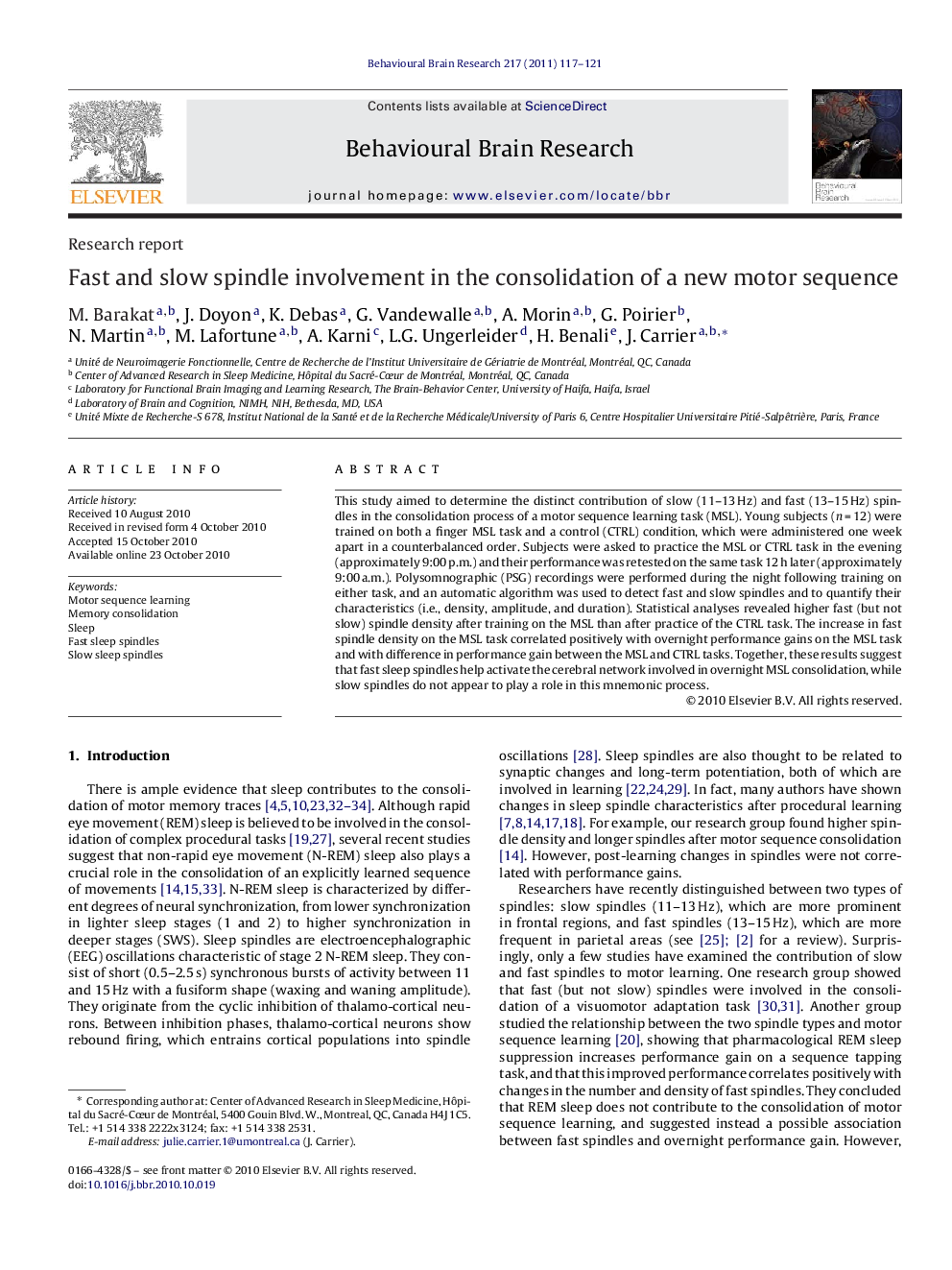| کد مقاله | کد نشریه | سال انتشار | مقاله انگلیسی | نسخه تمام متن |
|---|---|---|---|---|
| 4313873 | 1290016 | 2011 | 5 صفحه PDF | دانلود رایگان |

This study aimed to determine the distinct contribution of slow (11–13 Hz) and fast (13–15 Hz) spindles in the consolidation process of a motor sequence learning task (MSL). Young subjects (n = 12) were trained on both a finger MSL task and a control (CTRL) condition, which were administered one week apart in a counterbalanced order. Subjects were asked to practice the MSL or CTRL task in the evening (approximately 9:00 p.m.) and their performance was retested on the same task 12 h later (approximately 9:00 a.m.). Polysomnographic (PSG) recordings were performed during the night following training on either task, and an automatic algorithm was used to detect fast and slow spindles and to quantify their characteristics (i.e., density, amplitude, and duration). Statistical analyses revealed higher fast (but not slow) spindle density after training on the MSL than after practice of the CTRL task. The increase in fast spindle density on the MSL task correlated positively with overnight performance gains on the MSL task and with difference in performance gain between the MSL and CTRL tasks. Together, these results suggest that fast sleep spindles help activate the cerebral network involved in overnight MSL consolidation, while slow spindles do not appear to play a role in this mnemonic process.
Journal: Behavioural Brain Research - Volume 217, Issue 1, 2 February 2011, Pages 117–121